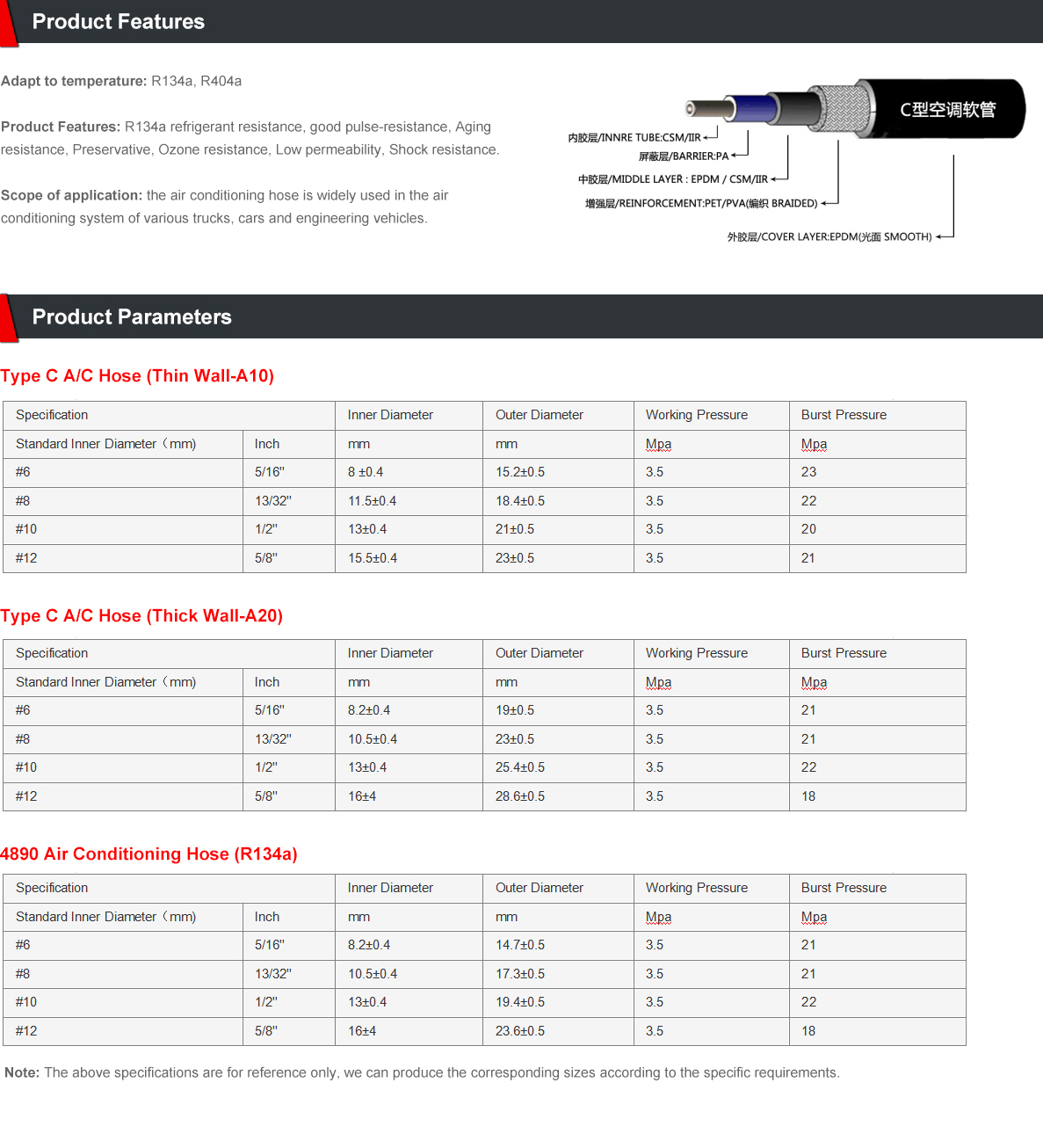power steering hose pressure
Understanding Power Steering Hose Pressure
Power steering systems have become a standard feature in modern vehicles, enhancing driving comfort and control. One of the crucial components of these systems is the power steering hose, which plays a vital role in transmitting hydraulic fluid necessary for steering assist. Understanding the importance of power steering hose pressure is essential for both vehicle performance and safety.
The power steering hose carries hydraulic fluid from the power steering pump to the steering gear. This pressurized fluid enables the driver to steer with minimal effort, significantly reducing the physical strain involved in maneuvering a vehicle. Typically, power steering hoses are designed to withstand high pressure, usually ranging from 1,000 to 1,500 psi, depending on the specific vehicle model and system design.
When the engine is running, the power steering pump generates hydraulic pressure that is sent through the hose. A well-functioning power steering hose ensures that the correct fluid pressure is maintained. However, if the hose becomes damaged, either through wear and tear or external factors, it can lead to a drop in pressure. A loss of hydraulic pressure can result in increased steering effort, making the vehicle harder to control, especially at lower speeds.
power steering hose pressure

Signs of a problem with power steering hose pressure can manifest in various ways. Drivers may notice difficulty in steering, particularly when maneuvering at low speeds or while parking. Moreover, fluid leaks around the power steering hose can indicate issues with the integrity of the hose, leading to a reduction in pressure and effectiveness. If left unaddressed, these issues could escalate into more significant problems, including failure of the power steering system altogether.
Regular maintenance and inspection of the power steering system, including the hoses, can help prevent pressure-related issues. Mechanics often recommend checking the hoses for cracks, wear, or any signs of leakage. Additionally, maintaining the proper level of hydraulic fluid is essential for ensuring that the system operates effectively. Drivers should also be aware of their vehicle's specific requirements regarding power steering fluid, as using the wrong type can compromise the pressure and performance.
In conclusion, the power steering hose plays a pivotal role in maintaining the necessary pressure for optimal steering performance. Understanding the mechanics behind power steering hose pressure can help drivers identify potential problems and maintain their vehicles in good working condition. Regular inspections and timely maintenance can not only enhance driving safety but also extend the overall lifespan of the power steering system, ensuring a smooth and enjoyable driving experience.
-
Ultimate Spiral Protection for Hoses & CablesNewsJun.26,2025
-
The Ultimate Quick-Connect Solutions for Every NeedNewsJun.26,2025
-
SAE J1401 Brake Hose: Reliable Choice for Safe BrakingNewsJun.26,2025
-
Reliable J2064 A/C Hoses for Real-World Cooling NeedsNewsJun.26,2025
-
Heavy-Duty Sewer Jetting Hoses Built to LastNewsJun.26,2025
-
Fix Power Steering Tube Leaks Fast – Durable & Affordable SolutionNewsJun.26,2025

